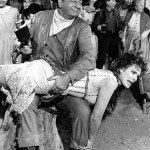
The American political landscape is predominantly characterized by a two-party system, with the Democrats and Republicans dominating the scene. Despite the frequent emergence of third-party candidates, they have historically struggled to make a significant impact on presidential elections. To understand why third-party candidates have not been able to secure the presidency, we can turn to Thomas P. “Tip” O’Neill’s famous dictum, “All politics is local,” and examine the broader implications of third-party candidacies in American politics.
The Local Nature of Politics
Tip O’Neill, a former Speaker of the House, famously said, “All politics is local.” This statement underscores the importance of local issues and personal relationships in political success. Local politics is about understanding and addressing the specific needs and concerns of constituents. This principle plays a crucial role in shaping political campaigns and electoral outcomes at every level of government, including the presidency.
Grassroots Connections
Successful political campaigns often rely on deep, grassroots connections with voters. Major party candidates benefit from established networks and long-standing relationships with local leaders, community organizations, and voters. These connections are built over years, if not decades, through sustained engagement and service. Third-party candidates typically lack these entrenched networks, making it difficult to mobilize voters and secure the necessary support. As long as alternative parties lack presence in local elections, they will have no hope of winning. a general election.
Voter Familiarity and Trust
Voters tend to support candidates they are familiar with and trust. Major party candidates often have the advantage of name recognition and a track record of public service. Third-party candidates, on the other hand, frequently struggle with visibility and credibility. Without the backing of a major party, it is challenging for third-party candidates to build the same level of voter familiarity and trust.
Local Issues and National Campaigns
National campaigns must resonate with voters across diverse local contexts. Major parties have the resources and infrastructure to tailor their messages to local issues while maintaining a cohesive national platform. Third-party candidates, constrained by limited resources, often struggle to effectively address local concerns while also presenting a compelling national vision. This disconnect can alienate voters who prioritize local issues when making their electoral decisions.
The Role of the Electoral System and the Electoral College
The American electoral system further complicates the prospects of third-party candidates. The winner-takes-all nature of the Electoral College and single-member district plurality voting are significant barriers to third-party success.
The Electoral College system requires candidates to secure a majority of electoral votes to win the presidency. This system inherently favors the two major parties. Third-party candidates face the daunting challenge of winning entire states to gain electoral votes. Historically, third-party candidates have struggled to win any states, let alone the majority required for victory.
Single-Member District Plurality Voting
In Congressional and state elections, single-member district plurality voting (often referred to as “first-past-the-post”) further entrenches the two-party system. This method awards the seat to the candidate with the most votes, regardless of whether they achieve an absolute majority. In such a system, voters often perceive a vote for a third-party candidate as a wasted vote, as it is unlikely to result in electoral success. This perception discourages voters from supporting third-party candidates, reinforcing the dominance of the major parties.
The Impact of Third-Party Candidates on Presidential Elections
While third-party candidates are unlikely to win presidential elections, they can significantly impact the outcomes by influencing voter behavior and electoral dynamics. In many cases, third-party candidates have played a spoiler role, inadvertently aiding one of the major parties.
The Spoiler Effect
The spoiler effect occurs when a third-party candidate draws votes away from a major party candidate, potentially altering the election outcome. This phenomenon is often cited as a reason why third-party candidates can inadvertently help elect Republican candidates. Historically, third-party candidates have tended to siphon more votes from Democratic candidates, given the ideological spectrum of American politics.
Notable Examples
One of the most notable examples of the spoiler effect is the 2000 presidential election, where Green Party candidate Ralph Nader was accused of siphoning votes from Democratic candidate Al Gore. In a tightly contested election, Gore lost crucial states such as Florida by a narrow margin. Many analysts argue that Nader’s candidacy drew enough votes away from Gore to tip the scales in favor of Republican candidate George W. Bush.
Another example is the 1992 presidential election, where independent candidate Ross Perot received a significant portion of the vote. While Perot’s impact on the election is debated, some argue that his candidacy drew votes away from incumbent President George H.W. Bush, aiding Bill Clinton’s victory.
Ideological and Strategic Voting
Voters often engage in ideological and strategic voting. Ideological voters cast their ballots based on alignment with a candidate’s policies and values. Strategic voters, on the other hand, prioritize electability and may vote for a less-preferred candidate to prevent an undesirable outcome.
Third-party candidates typically attract ideological voters dissatisfied with the major parties. However, in the polarized context of presidential elections, strategic voting often prevails. Many voters who might align with a third-party candidate ideologically choose to vote for a major party candidate they see as the lesser of two evils. This strategic voting behavior further diminishes the electoral prospects of third-party candidates.
Systemic Barriers to Third-Party Success
In addition to the electoral system and voter behavior, third-party candidates face numerous systemic barriers that hinder their chances of winning a presidential election.
Ballot Access Laws
Ballot access laws vary by state and often pose significant challenges for third-party candidates. Major parties automatically qualify for ballot access, while third-party candidates must navigate a complex and burdensome process of petitioning and meeting stringent requirements. These laws create substantial obstacles, diverting time and resources away from campaigning.
Campaign Finance
The high cost of presidential campaigns is another major barrier for third-party candidates. Major parties benefit from extensive fundraising networks and financial support from donors, political action committees (PACs), and super PACs. Third-party candidates, with limited financial resources, struggle to compete on an equal footing. The disparity in campaign financing affects everything from advertising and outreach to ground operations and voter mobilization.
Media Coverage
Media coverage plays a crucial role in shaping public perception and influencing voter behavior. Major party candidates receive extensive media attention, while third-party candidates often struggle to gain visibility. The media’s focus on the two major parties marginalizes third-party candidates, making it difficult for them to reach a broad audience and build momentum.
Institutional and Legal Challenges
The institutional and legal framework of American politics further reinforces the dominance of the two-party system. Major parties benefit from established infrastructure, organizational support, and legal advantages. For example, the Commission on Presidential Debates, which organizes the presidential debates, sets criteria that often exclude third-party candidates. These institutional barriers limit the ability of third-party candidates to compete effectively.
The Path Forward: Reform and Realignment
While the prospects for third-party candidates winning the presidency remain slim under the current system, there are potential paths forward that could create more opportunities for diverse political representation.
Electoral Reforms
Electoral reforms such as ranked-choice voting and proportional representation could mitigate the disadvantages faced by third-party candidates. Ranked-choice voting allows voters to rank candidates in order of preference, reducing the spoiler effect and encouraging more diverse candidacies. Proportional representation, used in many parliamentary systems, allocates seats based on the percentage of votes received, enabling greater representation for smaller parties.
Building Local and State-Level Success
Third-party candidates can build credibility and support by focusing on local and state-level elections. Success at these levels can create a foundation for national campaigns and challenge the dominance of major parties. Building a track record of public service and demonstrating the ability to address local issues can help third-party candidates gain voter trust and recognition.
Coalition Building
Third-party candidates can also work to build coalitions with like-minded groups and movements. By aligning with social movements, advocacy organizations, and community groups, third-party candidates can amplify their message and expand their base of support. Coalition building can create a broader platform for change and increase the visibility of third-party perspectives.
Wrap-Up
The challenges faced by third-party candidates in winning presidential elections are deeply rooted in the structure of the American political system, voter behavior, and systemic barriers. Tip O’Neill’s assertion that “all politics is local” highlights the importance of grassroots connections and local engagement, areas where third-party candidates often fall short.
While third-party candidates play a vital role in bringing new ideas and perspectives to the political discourse, their chances of winning the presidency remain slim under the current system. However, with electoral reforms, strategic local and state-level efforts, and coalition building, there is potential for third-party candidates to make a more significant impact on American politics in the future.
Ultimately, the success of third-party candidates will depend on their ability to navigate and transform the complex landscape of American electoral politics, addressing both local and national concerns while overcoming entrenched barriers. As the political climate continues to evolve, the role of third-party candidates in shaping the future of American democracy remains an important and dynamic question.
Derrick Day is the author of Deconstructing Religion, and the host of The Forward Podcast.
He has co-authored a soon-to-be-released book with his “Freeology Friday” Facebook Live cohost, Aaron Tomlinson
Follow him on Facebook, Instagram, Twitter, TikTok, and YouTube














